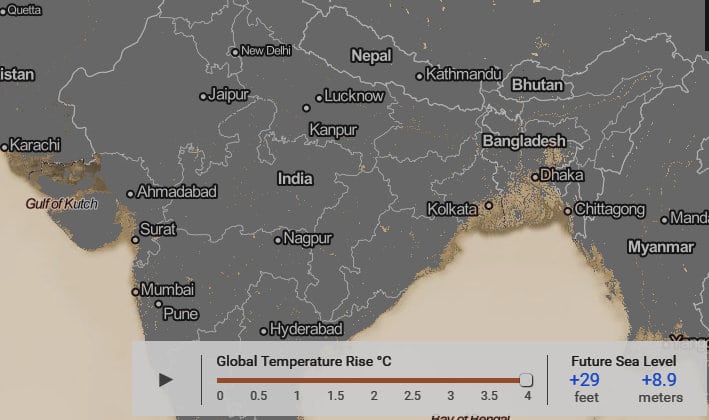Even with all the abnormalities in the weather, nature, and organisms of the earth, climate change deniers aren’t phased with the change. Deniers as in denying it for their financial benefit. The problem arises when these people are in influential positions in many government and organizations. As they blindfold their eyes and open their pockets, nature is at shifting towards a cleansing of sorts to wipe many species on earth.
Scientists with historical data for decades have for years claimed human being and their wasteful ways are causing global warming. The warming has caused global sea levels to rise, and many coastal living areas around the world are in danger of being flooded. We now have an interactive model of a global map where you can see the likely effects of global warming in the future. These predictions aren’t based on simple assumptions and are prepared with the help of historical data of polar ice melt, sea level rise and elevation on land near coastal regions of the world.
As Nepal is landlocked, I was curious to see whether this would affect us. The model showed Nepal isn’t going to be affected by the rising sea levels. However, we have an array of enormous snow mountains in the North, and global warming is certainly going to have an effect. The levels of snow melting and flowing through the rivers of Nepal could alleviate the problems we already have.

For people in coastal regions, you can check out the model of when the temperature of the earth’s atmosphere adds from 1 degree to 4 degree Celsius. This temperature is an average rise of temperature throughout the world rather than seasonal temperature fluctuations.
It might already be late to reverse the effects of climate change, but you might as well slow down the process till you hand over the earth to the next generation.
